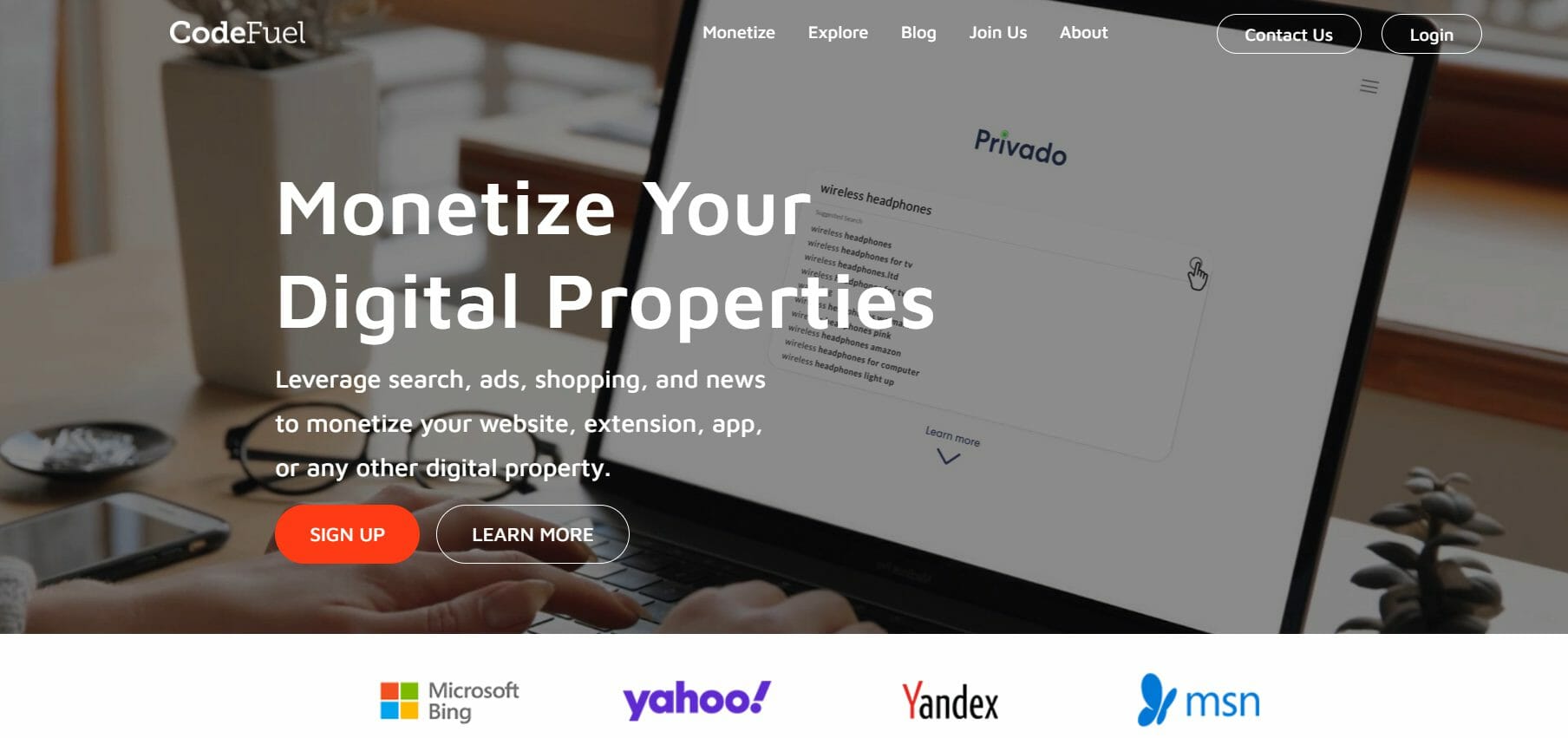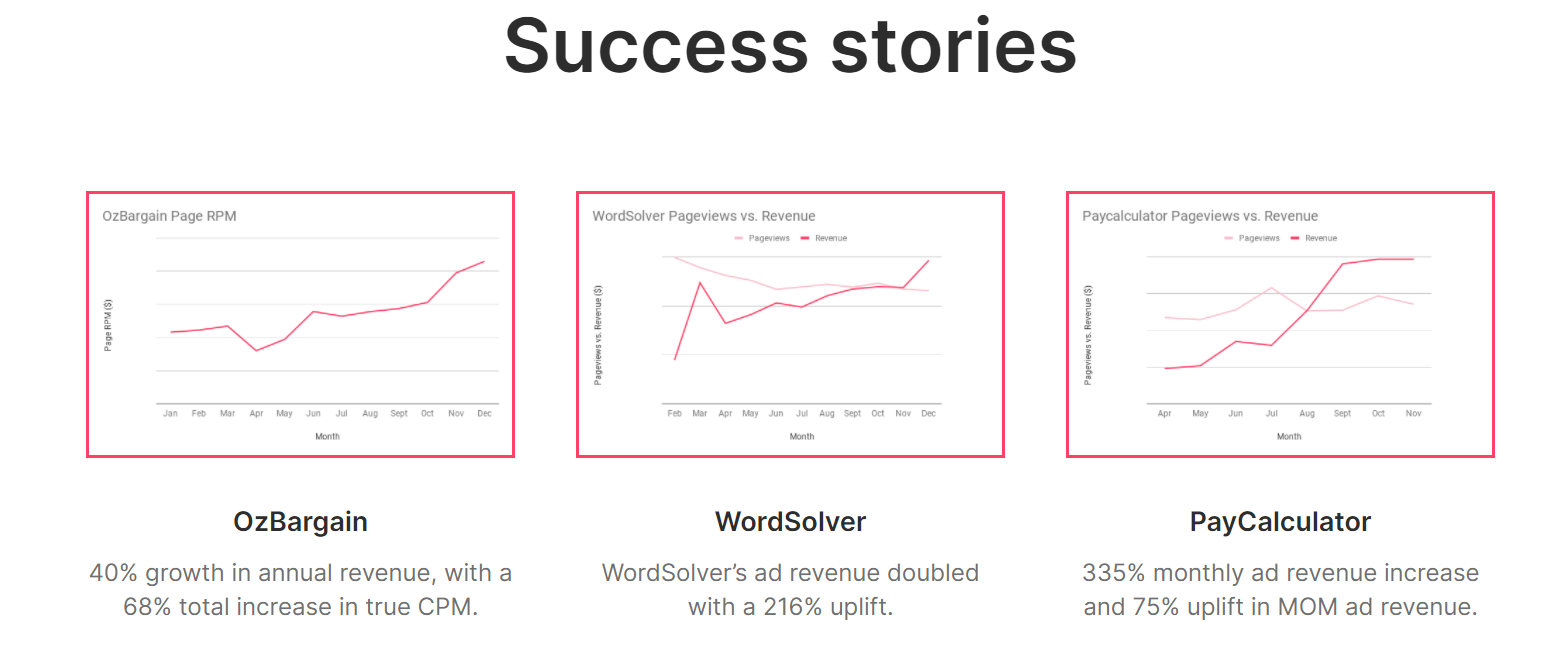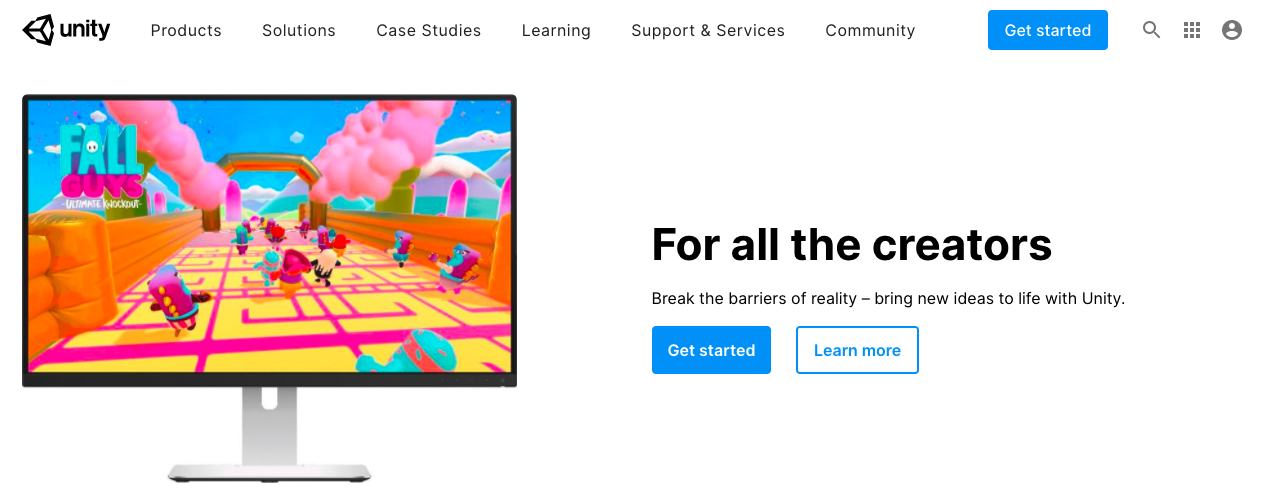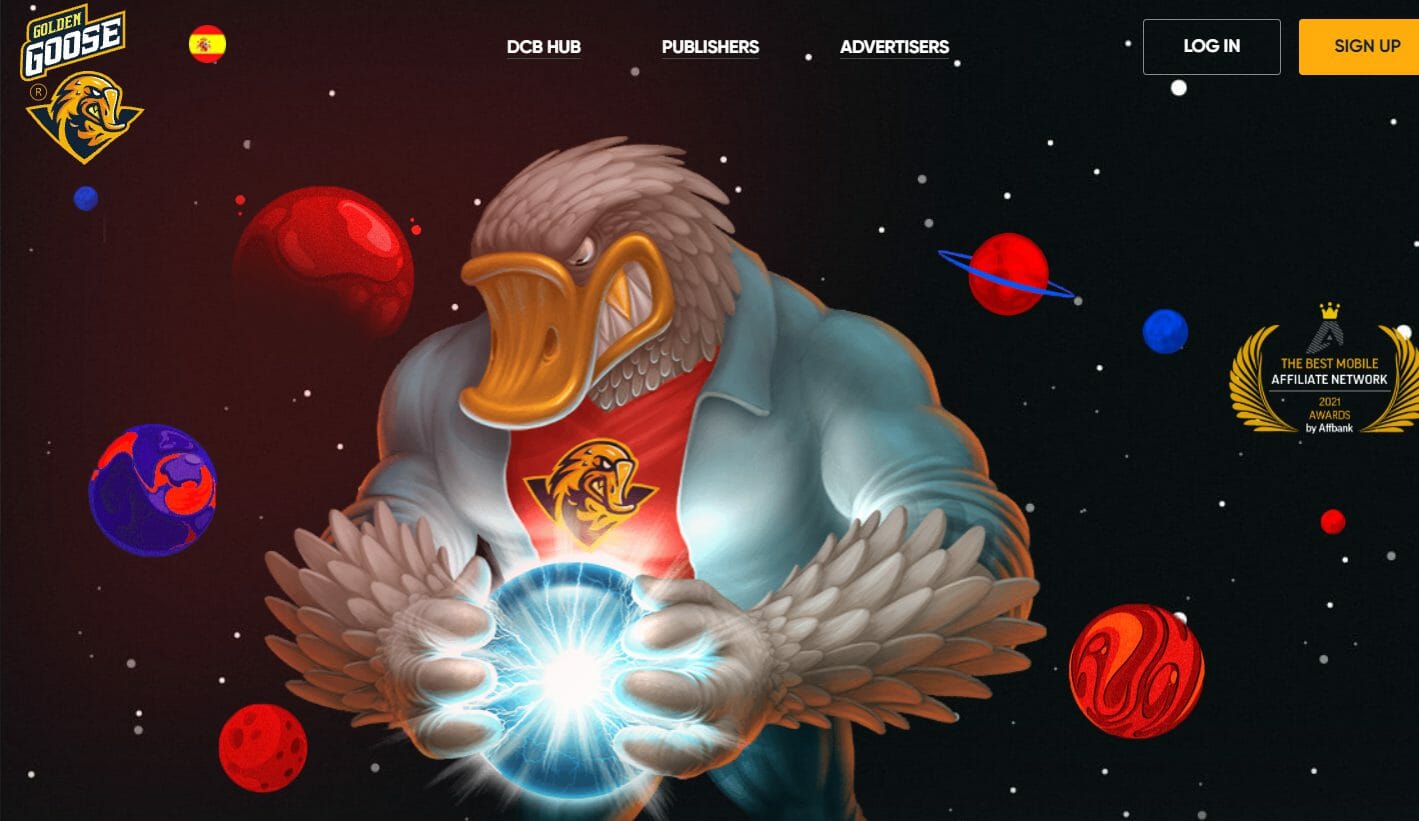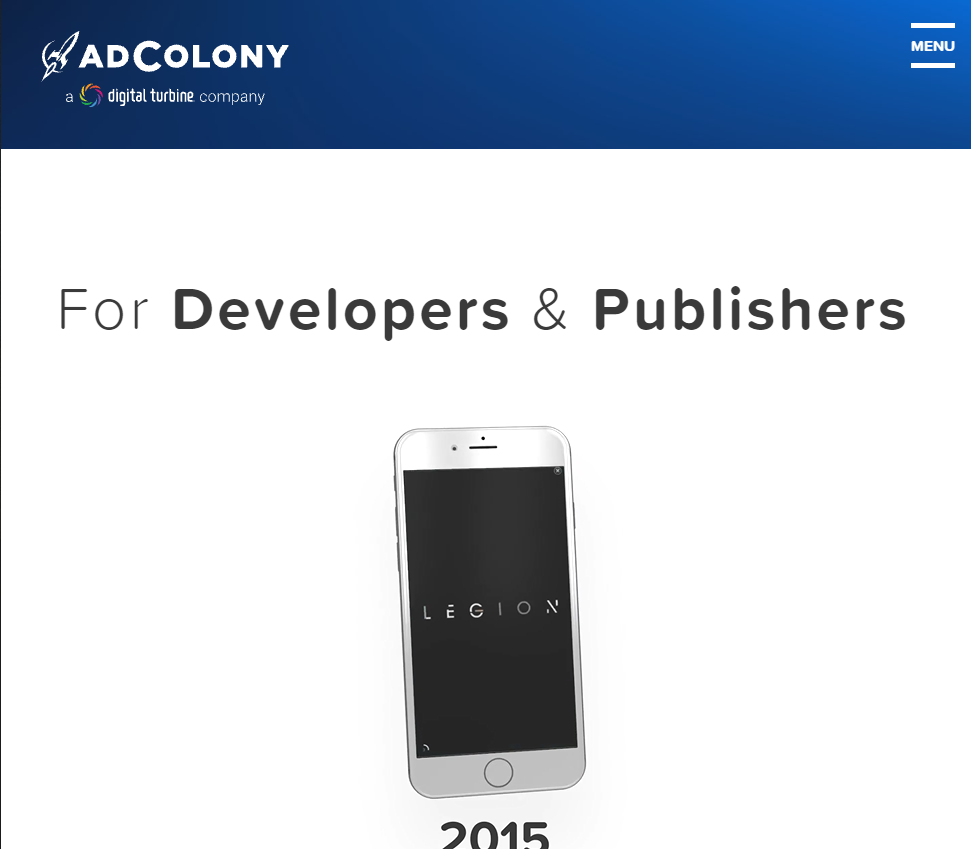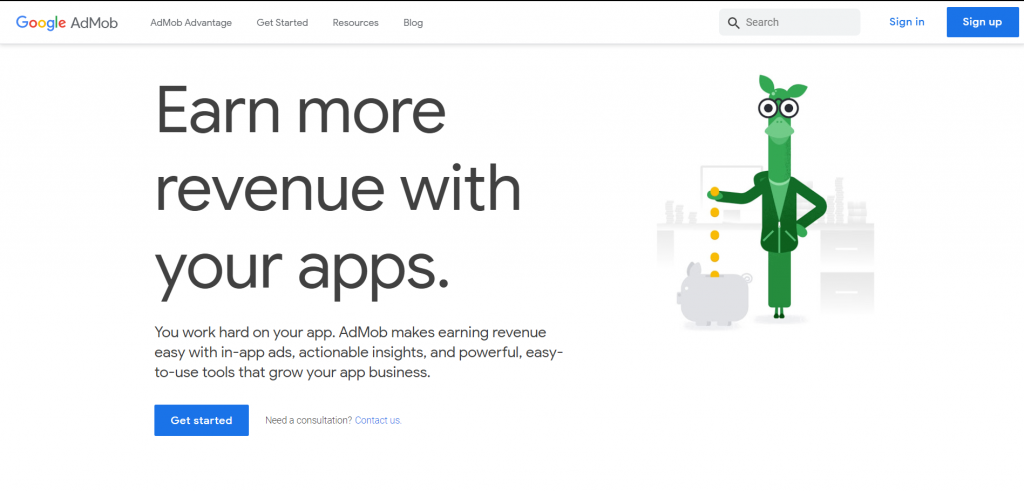An ad network is an excellent way for mobile publishers to monetize their applications or mobile sites by selling ad space to advertisers. In this guide, we’ll explore the best mobile ad networks for publishers and what you should consider before choosing one.
In this post
Short in Time? These Are Our Top 11 Ad Networks for Mobile
What is a Mobile Ad Network?
A mobile ad network is an integrated platform that bridges advertisers with mobile app publishers. It enables developers to monetize their applications through passive income from mobile ads.
Mobile ad networks can cater to publishers or advertisers. When they are geared to publishers, they are called supply-side platforms (SSP). When an ad network is geared toward advertisers, it is called a demand-side platform (DSP).
How Mobile Ad Networks Work
When app publishers sign up for an ad network, they get paid for making ad space available in their apps. The network collects the ad space from all publishers and offers it to buyers. When selling, the ad network takes a percentage of the ad revenue or increases the ad space rate.
Mobile ad networks use an advertising structure similar to other digital advertising services, but the difference is that these ads are served via ads.
Some mobile ad networks use a goal optimization model. In this model, the advertiser pays the network to achieve a specific goal with the ad. For example, downloading the app, or converting an in-app purchase. A mobile ad network optimizes the ads to achieve a specific user behavior rather than to get impressions. Goal optimization bidding means the buyer bids for the goal. Some networks, like Facebook, allow advertisers to pick the event they want to bid.
Regardless, all networks use optimization algorithms to find the best publisher for the ad. The algorithm considers the user behavior in the app and serves the ad according to the targeting criteria.
What is a Mobile Advertising Platform?
A mobile advertising platform enables advertisers to publish text, graphics, or animated advertisements on mobile websites and applications.
These software solutions provide mechanisms to facilitate monetizing applications. It works as an intermediary between mobile publishers and advertisers. A mobile advertiser pays a publishing fee for each user’s action via the ad, like clicking on it. The platform’s business model can include pricing models like Cost-per-Click (CPC), Cost-per-Mille (CPM), or Cost-per-Action (CPA).
What to Consider When Choosing an Ad Network?
Choosing the right ad network for your business can be confusing. There are too many choices, and the jargon can further complicate things. Should you choose CPC or CPM? An extensive or niche ad network? Let’s review some key factors to take into account before signing up with an ad network:
The size of the network
Theoretically, an ad network with tens of thousands of advertisers can give you better performance than one with a thousand. A more extensive inventory means more options to match an ad to your website via contextual targeting.
A large pool of advertisers also means you can target a wider geographical area, increasing the chances for your inventory to be sold. Using a large ad network may also increase your profits. Since ad networks sell inventory to the highest bidder, you have more chances for high bidders when you have more advertisers.
However, the size of the network is not the only factor that matters. That’s what brings us to our second point.
Ad formats available
The ad format is even more critical in mobile advertising. An ad that is not fitting well with the phone’s small screen is a waste of money. Look for an ad network that offers multiple ad formats, standard display units, custom unis, text ads, rich media, video, interstitial, search box, and more.
If you are new and don’t know which format goes better with your application or mobile website, going with a network that offers multiple formats allows you to A/B test the ads for performance.
The quality of the ads
Technically, every ad the ad server algorithm serves you is highly related to the user preferences. But many times, this differs significantly from network to network.
Many publishers don’t care what ads are being served on their websites or apps. While it seems a good idea to increase profits, serving every ad that comes your way can hurt your brand. You can lose all the benefits from creating engaging content for your website or giving your application the best user experience.
Low-quality ads damage your user’s trust, and your reputation may suffer from associating with those types of ads. Users can drop your application like hot coals.
The technology behind the ad network
Look for a network that offers the best technology you can find. Publishers should look for features that not only maximize your yield but make your ad management easier. Features like a centralized ad management system, automated reporting tools, real-time updates, contextual targeting are some of the functions you may look for.
Switching from a legacy ad network to a network based on artificial intelligence and machine learning can help you reach higher-paying advertisers while enhancing your user experience.
Payment terms
Networks pay publishers in a variety of methods, for example, CPV (cost per view), CPM (cost per mile), CPC (cost per click), CPA (cost per action), or fixed costs.
You probably need to try different pricing models to check which one will give you the best revenue. Alternatively, signing with an ad network that offers other compensation models saves you from having to switch between networks when you want to try a new pricing model — you start a new campaign in your existing interface.
Best 11 Mobile Ad Networks for Mobile
1. CodeFuel
CodeFuel is an all-in-one monetization platform that leverages high-intent ads, search and news for websites and mobile applications.
Features
- Complete intent-based monetization for applications and mobile sites.
- Offers search mediation via monetization pages.
- Uses contextual targeting to present relevant shopping ads that encourage high intent users and increase conversions.
- Multiple ad formats.
- Supports multiple platforms and verticals.
- Advanced tracking and analytics.
- Centralized dashboard.
2. Publift
Publift is a programmatic ad platform geared for publishers. It offers personalized ad solutions optimized for the app content.
Features
- Multiple ad types, playable, native, banners, interstitial and mobile video.
- Sticky footer ads.
- Interscrollers
- Advance A/B testing
- Reporting and analytics
3. Unity
Unity Ads is an ad network specializing in monetizing mobile games. It allows game apps to monetize by adding in-app video ads.
Features
- Compatible with iOS and Android and all game engines
- CPI or CPM campaigns
- Interstitial, video, and banner ads
4. Golden Goose
This ad network for mobile offers over 600 mVAS services from around the world. They have a cost-per-action model.
Features
- CPA platform providing mobile traffic monetization tools for publishers and advertisers.
- Fraud detection.
- Pay per action
5. AdColony
This ad network specializes in mobile advertising for app developers. Offers multiple formats. They started with a focus on gaming apps and later expanded to other types of mobile publishing advertising.
Features
- A platform for developers and publishers
- Multiple ad formats
- Ad mediation
6. Google AdMob
One of the largest Cost-per-Click networks offers tools to monetize apps and mobile websites. AdMob is primarily popular among small businesses and gaming companies.
Features
- Waterfall mediation and bidding.
- Users can issue, manage, and create reports for their inventory.
- Easy to use dashboard
- High profit based ad serving platform
- Designed to serve ads without disrupting the app user experience
7. Smaato
It is a digital self-serving ad tech platform for publishers and advertisers.
Features
- Large pool of over 90,000 advertisers
- Multiple ad formats, including video, interstitial, interactive and rewarded ads.
- Optimizes demand sources with Dynamic Demand
- Ad mediation with other ad networks
- Real time bidding
8. ironSource
It is a mobile app monetization and mobile advertising application. It is used primarily by enterprise-level companies.
Features
- In-app bidding
- Cross-promotion
- Multiple ad units, including rewarded videos, interstitials, and banners.
- Premium advertisers
9. Taboola
It is a native advertising platform that publishes recommended content in various news sites and spaces.
Features
- Mobile-only ads that send users to the app store.
- Mobile campaign manager allows to manage mobile campaigns wth a content discovery network.
- App install – a feature that encourages users to download the application.
- A mobile SDK that allows apps to offer Taboola feed.
10. Facebook Audience Network
Facebook audience networks enable advertisers to show ads on the Facebook ecosystem via mobile applications.
Features
- Remarketing
- High targeted ads
- Real-time bidding, no waterfall.
- Native, interstitial, banner, rewarded video, and playable ads.
- Game monetization with player-friendly ads.
- View placements and formats
- Analytics and reporting, including data on attribution, ROI, and conversions.
11. InMobi
Is a platform geared toward monetizing mobile applications with the aim of maximizing CPC and CPI campaigns.
Features
- Wide range of ad formats, including rich media, video, and native ads.
- Premium advertisers with over 5000 programmatic buyers.
- Dynamic pricing and real-time bidding.
Other Mobile Ad Networks We Recommend
1. Start.io Startapp
StartApp is a mobile tech platform that enables advertisers and publishers to deliver great mobile experiences for their users.
Features
- Mobile SDK gives access to premium demand
- Dashboard that allows control placement
- Analytics and reporting
2. AppleSearch ads
Designed for the iOS mobile platform, Apple ads leverage searches to bring traffic to developer’s apps. You can set CPI campaigns automatically with a minimum budget of $5000 per app.
Features
- Automated campaign optimization
- Real-time bidding
- Engaged user base
- High conversion rates
- Two tiers- basic and advanced ads.
3. Snapchat Ads
There is a Snapchat Ads network for iOS platform, CPI and CPC campaigns. It offers filters and lenses unique to this platform.
Features
- App install ads
- Ads direct users to the app store or a website to download the app.
- Multiple app formats
- SkAdNetwork
4. Twitter Ads
Advertisers can get traffic to their app via Twitter channels. Its deep linking technology means ads can be linked to a specific section on an app. Twitter ads support Android and iOS platforms, and all ad formats are auto-generated.
Features
- Multiple ad types and formats, including Promoted Ads, Follower Ads, and Trend Takeover.
- The Twitter Ads Manager allows advertisers to activate campaigns.
- Your account must be eligible to run ads
- The ads are served alongside relevant Tweets, replies, and queries.
- Twitter Amplify pairs brands with publishers’ videos n their target audiences.
Top 5 Picks for Mobile Apps for Advertisements
1. Codefuel
A holistic monetization platform, CodeFuel is a comprehensive solution for monetizing mobile apps through search and shopping ads.
2. InMobi
Is an Indian mobile advertising technology company. Their mobile-first platform allows brands, developers and publishers to deliver contextual mobile advertising.
3. TapJoy
Is a mobile advertising platform that supports iOS, Android and Mobile web. A difference to other mobile ad networks, Tapjoy offers users virtual currencies to unlock content from applications.
4. AdMob
Is the mobile advertising branch of Google, one of the largest global mobile ad networks. It connects with other Google ad services and offers a large reach.
5. Smaato
Is a digital ad tech platform with a self-serve omni channel monetization solution. It allows multiple ad formats, including interstitial, banner, and interactive ads.
Top 3 Best Ad Networks for Gaming
Everybody is familiar with ad networks like Google and Facebook, but there could be other networks where you can acquire high-level users for gaming apps.
Applovin
Applovin was rated #1 for ad spends on iOS and Android. Their platform attracts users on both systems for multiple types of ads. Applovin reaches 470 million mobile gamers.
Unity Ads
It offers a monetization solution specifically designed for gamers, enabling the integration of relevant ads in-game.
Vungle
It is a self-serve advertising platform. The platform offers tracking tools that help optimize ad spend by tracking KPIs in real-time.
Who Are The Biggest Mobile Advertisers?
Today, mobile and app advertising comprise the largest percentage of the digital advertising market. Google leads the pack as the nr. 1 player in mobile advertising, since acquiring AdMob, who at the time was the leader in mobile advertising.
Mobile advertising has the advantage of reaching the user where it hangs out most: their smartphones. So, a number of top mobile advertising companies compete for the industry leadership:
Why Spend Money to Advertise on Mobile?
The goal of advertising is to reach the target user in the most efficient way possible. That means to reach the user where they are, and today, this means on their smartphones or computers. US mobile users spend over 3 hours on their phones per day. Of all users surveyed, Gen Z is the demographic that spends more time on their phones.
Advertising on mobile has several advantages:
- Easy access: Statistically, people spend more time on their phones than on their computers, and mobile comprises half of the web traffic. So, as we mentioned, you are reaching the user where they spend their time most.
- Immediate engagement: Mobile ads can reach customers at defining times according to the application context.
- Cost-effective: Digital and mobile advertising is more cost-effective than traditional advertising. The targeting is also more effective, as you get to customers with intent.
- Personalization: Smartphones enable ads personalization by gathering data about the user’s preferences. You can narrow the target to the person based on location, previous purchases, or preferences.
Tips From CodeFuel for Mobile Publisher Success
At CodeFuel, we are experts in mobile publishing. Over the years, we collected from our customers and researched what works and doesn’t when monetizing apps and mobile sites. Whether you are trying to monetize your app or your mobile site, there are some tips to consider:
- User engagement is critical: If user engagement is high, it means users are happy. This is especially true for app publishers. The more time users spend in the app, the more likely they will purchase.
- Reward loyal users: Discounts and perks can help convert users who are uncomfortable with in-app purchases. Also, users visiting your mobile site are more likely to purchase if offered “mobile-only” promotions.
- Create a community: People love interacting on their mobiles, and some sites and apps thrive with communities. Users tend to purchase more when they belong to an online community.
Checklist to create the perfect mobile advertising campaign
Answer these questions to have a campaign plan:
- What are your goals?
- Who is your target audience?
- Which ad format do you need?
- How long will the campaign last?
- Which devices will you target?
- How will you manage user data?
Once you answer these questions, you can proceed with the following steps:
- Design the ads.
Focus on using high-quality graphics, mainly if you target iPads and tablets. Your content copy should be compelling, crisp, and clear to encourage a call to action. - A/B test
Test different types of ads to check which works better. An assessment after launching the campaign can tell you how ads are performing.
Mobile Ad Formats of Ad Campaigns
When choosing an ad network, it is vital to consider what ad formats they offer. Here is a preview of different ad formats to help you decide:
1. Interstitial ads
These are full-screen that will appear in the app’s interface. They are usually displayed between app screens or different levels on a game app.
2. Banner ads
These are static or animated images placed inside an app’s interface. They are typically used for advertising a third-party product or promoting the expansion of the app’s functionality.
3. Native ads
These ads may consist of textual or video advertisements that can match the style and form of the application or site they are placed on.
4. OfferWall ads
These are static, dynamic, or interactive. They are typically displayed within a mobile app to provide users with offers to engage with. Mobile games and mobile e-shopping sites use this format for advertising promotions or other games from the same developer.
5. Rich media ads
include video, audio, and interactive ads, encouraging viewers to engage or act on the content. They can be short (under one minute) videos. Video ads can be in-stream or out-stream. In-stream means streaming inside an app, before, within, or after a video. Out-stream video ads are displayed on a web page inside the mobile app. These types of ads have the highest engagement rates.
6. Push notifications
These ads can catch your audience’s attention when they are not using the app—for instance, sending notifications based on location triggers.
7. Click-to-download ads
When users click on these ads, they are directed to Google Play or Apple Store to download the advertised application.
8. Click-to-call and click-to-message ads
You can see these ads in social media, usually prompting users to click on the ad to send a Whatsapp message or call the advertiser.
9. Search ads
These ads catch your audience’s attention and remind them to use your app while the user is searching for relevant keywords and categories.
10. Social media ads
These ads promote your application directly on their social media feed, for instance, sponsored Facebook posts.
Mobile Advertising Business Models to Use
Mobile advertising can take different forms. They may include
Cost per click (CPC).
Publishers get paid each time a user clicks on the ad unit. This is the best model for advertisers because they only pay when they take an active interest in the ad.
Cost per mille (CPM)
In this model, publishers get paid for every 1000 ad impressions. This model best suits publishers because the revenue doesn’t depend on the ad’s number of clicks. The publisher can even forecast revenue if the site or app has a steady user base with reasonably stable traffic.
Cost per view (CPV)
In this model, the publisher gets paid each time a user views the video ad. Mobile ad networks provide advertisers with video ad campaigns. Every time a user watches a certain percentage of a video ad (usually half), the advertiser charges.
Cost per Action (CPA)
Publishers get paid every time a viewer completes a pre-set action, for example, downloading the advertised app or completing a registration form. This model benefits both businesses and publishers. Publishers can monetize their inventory faster, and the model offers more options for advertisers too.
Cost per Install (CPI)
The CPI is a set price that the advertiser pays to the publisher every time a user installs their app as a direct result of the advertiser’s ad. This rate shouldn’t be confused with eCPI, the price advertisers pay for installs regardless of how they come in.
How do you calculate the Cost per Install?
|
CPI = Marketing campaign spend / Nr of app installs |
Fixed cost.
The publisher sells the ad inventory for a fixed price for a specific time. This model is uncommon and typically involves selling inventory directly to advertisers.
Why do mobile publishers need an ad network after all?
Mobile advertising, In-app advertising, in particular, is a growing trend. According to Statista, global mobile advertising spending was $276.21 billion in 2020, from $230 billion in 2019. The market is expected to reach $341 billion in 2024.
App revenue is also soaring. Despite the pandemic, mobile advertising spending in the US reached $96 billion and is expected to reach $117 billion in 2021.
There is a huge potential for revenue in mobile advertising. If you are thinking of monetizing via mobile ads, consider using an ad network. The web sells your ad space to marketers and advertisers, getting the highest paying possible bids for your space. When using an ad network, you sell the ad space in your app or mobile website and generate passive income.
An ad network provides revenue while enhancing the user experience by showing related ads. As a publisher, you’ll want a network that protects your reputation by serving highly targeted advertising in various ad formats.
Benefits of in-app advertising
If you want to know how to do in-app advertising effectively, check here.
As we mentioned above, in-app advertising is steadily growing. Mobile apps provide a way to reach consumers where they are, on their phones. They capture consumers’ attention and encourage conversions while the user is consuming content or actively browsing for products or services.
In-app advertising typically offers a higher click-through rate than web advertising, ranging from 0.1% to 0.2% for desktop ads. Additionally, in-app ads get higher click-throughs than mobile web ads. 0.58% in apps vs. 0.23% in mobile web.
Finally, running ads through an ad network is more effective than using a Demand-side platform. Click-through rates on ads placed by ad networks are 0.6% vs. 0.11% in exchanges.
Who Are The Best Mobile Ad Network with Mediation?
1. CodeFuel: If you are looking for an all in one solution, look no further. CodeFuel is a complete monetization solution to maximize publishers’ revenue. Ad mediation is one of its key features, leveraging search, shopping and display ads for mobile apps, websites and extensions.
2. AdMob: AdMob is the Google platform for app ad mediation. The platform integrates with more than 30 ad networks. It has a large reach and useful features like automatic audience segmentation.
3. AppLovin: Is a popular name in the app development space, and the app ad mediation solution is very popular with developer.
4. ironSource: Their app ad mediation tool is one of the best in the market. It connects publishers with advertisers but has an auto optimization algorithm.
5. Fyber: It offers a unified auction on more than 180 DSPs. Publishers can conduct manual waterfall optimization or run programmatic auctions.
FAQs
What is mediation in mobile advertising?
Mediation is the process of connecting ad networks within a single software. This system browses the networks for the advertisers with the best eCPM and features them on your site.
A mediation single software kit (SDK) optimizes the ad bidding. If you want to sign up for multiple ad platforms, choose one that offers mediation to get the highest yield.
How effective is mobile advertising?
Mobile advertising has significant advantages over other channels. Czech research found that mobile ads are 30 times more effective than Internet ads. The average mobile response is 2.72% and can reach 11.8% for the most successful campaign. In comparison, an average Internet campaign has a 0.02% average.
What are programmatic advertising and real-time bidding?
Programmatic advertising is the buying and selling of advertising via advanced software. All types of advertisements are traded via programmatic advertising, not only mobile. For mobile, though, programmatic advertising happens through real-time bidding (RTB). Real-time consists of a live auction in which the demand-side advertising platforms bid on personal impressions from an advertising exchange.
What is the difference between an SSP, a DSP, and an ad exchange?
Demand-Side Platforms (DSP) are advertising trading desks that provide advertisers with a dashboard to buy mobile advertising inventory. The platform bids on mobile advertising inventory on behalf of advertisers.
Ad exchanges are the digital marketplace that acts as an intermediary between advertisers and publishers. They present the inventory from publishers to advertisers.
A Supply-Side Platform (SSP) is similar to a DSP but from the publisher’s side. They use programmatic technology to sell publishers’ inventory.
What is premium inventory, and how can I get it?
Premium is the highest quality inventory for advertisers, belonging to apps and sites with a large user base and quality content. These popular apps and sites are often strict about the types of ads they allow.
How CodeFuel increases engagement and conversions for mobile publishers
CodeFuel offers an innovative and comprehensive solution that leverages intent-based contextual targeting for mobile advertising. It provides news, searches, and shopping ads to monetize your application or mobile site. By focusing on the user intent, advertising gets high relevancy and converts more.
Ready to increase the revenue of your mobile app or site? Sign up for CodeFuel.


